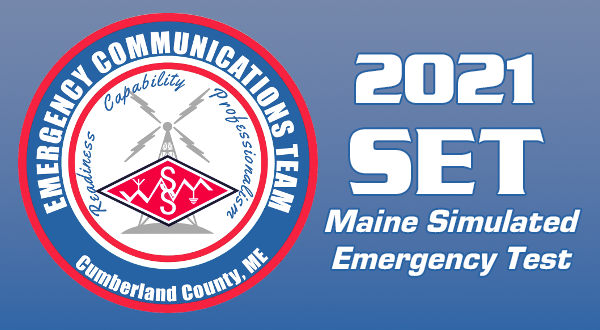For 24-hours, beginning at noon on Friday, October 27th, members of the Wireless Society of Southern Maine Emergency Communications Team (WSSM-ECT), which meets monthly in Windham, will participate in a statewide drill to test their communications capabilities between various different sites throughout Cumberland County and the state. The drill, known as the Simulated Emergency Test, or SET, is an annual exercise, sponsored by the American Radio Relay League, which encourages amateur radio operators from across the country to test their communications skills during a mock disaster.
During the SET, hams are required to quickly establish communications between various Emergency Operations Centers and exchange formal messages and traffic, which contain requests for supplies, medical information, or weather reports, or other information that may be of importance during a disaster. They do this via voice, Morse code, and digital two-way radio, on bands ranging from HF to UHF, as required.
“Similar to previous years, there’s has been statewide coordination for the SET, and Maine ARES and others have developed a plan that involves testing both amateur radio and EMA communications,” says Tim Watson, of Saco. Watson is a founder of the Wireless Society of Southern Maine, which provides auxiliary communications support for Cumberland County EMA, as well as the National Weather Service. “The SET tests how we respond during large- scale disasters, where commercial infrastructure has failed. In these events, hams are often the only source of communications.”
“The hams in our club are a dedicated group,” adds club President, Jason Andrews, of Scarborough. “Amateur radio has a long history of volunteerism. Sure, it’s a hobby and there’s some fun things that we do like lighthouse expeditions or competitive events like contesting, but so many like to stay sharp by providing support for community events, and drills like this, so they’ll be ready to offer their time and expertise when disaster strikes.”
The Wireless Society of Southern Maine’s Emergency Communications Team is participating in their ninth SET. After the event, the participants will do an assessment to determine how well they performed and look for areas to improve upon. “There’s always new things to learn and ways to improve,” says Watson. “This year we’ll be testing some updates that have been made to the statewide digital packet network, which is one of the tools we use for sending messages. We hope to learn more about its capabilities and how to improve it for the future.”
For more information about amateur radio, or the Wireless Society of Southern Maine, please visit their website at: http://www.mainehamradio.com


